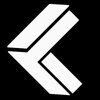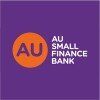Flutter Developer
200+ Flutter Developer Interview Questions and Answers

Asked in Mind You Infotech

Q. Write the code to integrate an API in your Flutter app.
To integrate an API in a Flutter app, you need to make HTTP requests using packages like http or dio.
Import the http or dio package in your Flutter project
Create a function to make the API request using the package's methods
Parse the response data and update the app's state or UI accordingly

Asked in Mind You Infotech

Q. What is Firebase? And How You use it in your App
Firebase is a mobile and web application development platform that provides backend services and tools.
Firebase is a Backend-as-a-Service (BaaS) platform
It offers various services like authentication, real-time database, cloud storage, and hosting
Firebase can be used to build and scale apps quickly
It provides SDKs for different platforms including Flutter
Firebase can be integrated into Flutter apps using the firebase_core and firebase_auth packages
Example: Firebase can be use...read more
Flutter Developer Interview Questions and Answers for Freshers

Asked in Mind You Infotech

Q. What do you use as a backend for Flutter applications?
Flutter does not have a built-in backend. Developers can use various backend technologies like Firebase, Node.js, Django, etc.
Flutter does not provide a default backend
Developers can choose any backend technology based on their requirements
Popular backend options for Flutter include Firebase, Node.js, Django, etc.
Firebase provides a complete backend solution with features like authentication, database, storage, etc.

Asked in Mind You Infotech

Q. What do you know about Flutter packages?
A package is a collection of Dart libraries, assets, and other resources that can be shared and reused in Flutter projects.
Packages are used to add functionality to Flutter apps.
Packages can be added to a Flutter project by specifying them in the pubspec.yaml file.
Packages can be published and shared on the Dart package repository (pub.dev).
Packages can include libraries, assets (such as images or fonts), and other resources.
Popular Flutter packages include 'http' for making ...read more

Asked in Antino

Q. Can we send data from a GET request to the server?
Yes, data can be sent from a get request to the server using query parameters or request headers.
Query parameters can be added to the URL in a get request to send data to the server.
Request headers can also be used to send data in a get request.
Example: http://example.com/api/data?param1=value1¶m2=value2

Asked in Mind You Infotech

Q. What is the role of the SDK in Flutter?
SDK in Flutter provides a set of tools and libraries for developing and building applications.
SDK stands for Software Development Kit
It includes tools like compilers, debuggers, and emulators
Flutter SDK includes libraries for UI development, networking, and more
SDK helps developers to write, test, and deploy their applications
Flutter SDK includes Dart SDK as well
Flutter Developer Jobs




Asked in Clickzy Creative Technologies

Q. What do you know about Flutter?
Flutter is a mobile app SDK for building high-performance, high-fidelity, apps for iOS and Android, from a single codebase.
Flutter uses Dart programming language
Flutter provides a rich set of pre-built and customizable widgets
Flutter's hot reload feature allows for faster development and debugging
Flutter is used by companies like Google, Alibaba, and Tencent

Asked in Orchid Pharma

Q. What is the full form of API?
API stands for Application Programming Interface.
API is a set of rules and protocols that allows different software applications to communicate with each other.
It defines how software components should interact and what functionalities they can access.
APIs can be used to retrieve data from a server, send data to a server, or perform specific actions.
Examples of APIs include the Google Maps API, Twitter API, and Flutter API.
Share interview questions and help millions of jobseekers 🌟


Asked in Emsyne Tehnologies Private Limited

Q. Are you familiar with BLoC, and can you name a few keywords used in BLoC?
bloc is a state management library for Flutter applications.
State management library
Helps in managing the state of the application
Keywords: BlocProvider, BlocBuilder, BlocListener

Asked in Emsyne Tehnologies Private Limited

Q. Do you know about Flutter architecture and how it connects with native platforms?
Flutter architecture is based on widgets and is connected with native code through platform channels.
Flutter architecture is based on widgets, which are the building blocks of the UI.
Flutter uses a reactive framework to update the UI based on changes in the app state.
Flutter communicates with native code through platform channels to access device-specific features or APIs.
Examples of platform channels include method channels for invoking platform-specific code and event chann...read more

Asked in Emsyne Tehnologies Private Limited

Q. What is a mixin, and which keyword is utilized to implement a mixin?
A mixin is a way to reuse code in multiple classes without inheritance. 'with' keyword is used to implement a mixin in Dart.
Mixins are a way to share code between classes in Dart.
They are used to add functionality to a class without using inheritance.
The 'with' keyword is used to implement a mixin in Dart.
Mixins can be used to add features like animations, logging, etc. to multiple classes.

Asked in Emsyne Tehnologies Private Limited

Q. What is a StreamBuilder in the context of Dart and Flutter?
StreamBuilder is a widget in Flutter that listens to a stream and rebuilds itself when new data is emitted.
StreamBuilder is used to build UI components that depend on a stream of data.
It takes a stream and a builder function as parameters.
The builder function is called whenever new data is emitted by the stream, allowing the UI to update dynamically.
Example: StreamBuilder( stream: myStream, builder: (context, snapshot) { if (snapshot.hasData) { return Text(snapshot.data.toStr...read more

Asked in Mind You Infotech

Q. Are there any issues related to the bond agreement?
I'm sorry, but I don't understand the context of the question. Could you please provide more information?
Asked in Vivatech R&D

Q. Create a login screen and add a button for Sign in with Google.
Create a login screen with a 'Sign in with Google' button.
Create a login screen with email and password fields
Add a 'Sign in with Google' button that uses Google Sign-In API
Handle authentication with Firebase Authentication
Implement error handling for login process

Asked in Mind You Infotech

Q. What is the difference between a stateful and a stateless widget?
Stateful widgets can change their state during runtime, while stateless widgets cannot.
Stateful widgets have a mutable state that can be modified.
Stateless widgets are immutable and cannot be modified once created.
Stateful widgets are used when the UI needs to change dynamically based on user interactions or other factors.
Stateless widgets are used when the UI does not need to change and can be purely based on the input parameters.
Stateful widgets use the 'State' class to man...read more

Asked in Emsyne Tehnologies Private Limited

Q. What measures can be implemented to secure applications from reverse engineering?
Measures to secure applications from reverse engineering include code obfuscation, using encryption, implementing anti-tampering techniques, and utilizing secure APIs.
Implement code obfuscation to make the code harder to understand and reverse engineer.
Use encryption to protect sensitive data and prevent unauthorized access.
Implement anti-tampering techniques to detect and prevent modifications to the application.
Utilize secure APIs to communicate with servers and external se...read more

Asked in Mind You Infotech

Q. What is the difference between a Package and a Plugin in Flutter?
Packages are collections of code that can be used in a project, while plugins are packages that provide specific functionality.
Packages are general-purpose and can be used in any project.
Plugins are packages that provide specific functionality, such as accessing device features or integrating with third-party services.
Plugins are usually dependent on packages.
Examples of packages include http, shared_preferences, and intl.
Examples of plugins include google_maps_flutter, fireb...read more

Asked in PowerSchool India

Q. What is the OOPS concept? Explain polymorphism, abstraction, inheritance, and encapsulation.
OOPS stands for Object-Oriented Programming System. It includes concepts like polymorphism, abstraction, inheritance, and encapsulation.
Polymorphism allows objects of different classes to be treated as objects of a common superclass. Example: a shape class with subclasses like circle and square.
Abstraction is the concept of hiding the implementation details and showing only the necessary features of an object. Example: a car class with methods like start() and stop() without ...read more

Asked in HighLevel

Q. What is the difference between stateful and stateless widgets?
Stateful widgets can change state during runtime, while stateless widgets cannot.
Stateful widgets have a mutable state that can change during runtime.
Stateless widgets are immutable and their state cannot change once they are built.
Stateful widgets are used when the UI needs to dynamically update based on user interactions or data changes.
Stateless widgets are used for static content that does not change.
Example: A button widget that changes color when clicked would be a stat...read more

Asked in Watchyourhealth.com

Q. What is Flutter, and how is it different from other mobile development frameworks like React Native or native development?
Flutter is a UI toolkit developed by Google for building natively compiled applications for mobile, web, and desktop from a single codebase.
Flutter uses a single codebase to build applications for multiple platforms, unlike React Native which uses JavaScript and Native development which requires separate codebases for each platform.
Flutter provides a rich set of customizable widgets that allow for fast and flexible UI development.
Flutter uses Dart programming language, which ...read more

Asked in Emsyne Tehnologies Private Limited

Q. What is the process for uploading images in Flutter?
The process for uploading images in Flutter involves selecting an image from device storage, converting it to bytes, and sending it to a server.
Use plugins like image_picker to select an image from device storage
Convert the selected image to bytes using dart:io library
Send the image bytes to a server using http package

Asked in Alice Blue Commodities

Q. What are widgets and what are their different types?
Widgets are the building blocks of a Flutter app, representing UI elements. They can be structural, interactive, or stylistic.
Widgets are elements of the user interface, such as buttons, text, images, etc.
There are two main types of widgets: Stateful widgets, which can change over time, and Stateless widgets, which are immutable.
Examples of widgets include Text, Image, Container, Row, Column, ListView, etc.
Asked in Vivatech R&D

Q. Create a bottom navigation bar containing 5 menu items.
Create a bottom navigation bar with 5 menu items for Flutter Developer interview question.
Use BottomNavigationBar widget in Flutter
Set items property with BottomNavigationBarItem widgets for each menu item
Set currentIndex property to highlight the selected menu item
Handle onTap property to navigate to different screens based on selected menu item
Example: BottomNavigationBar with 5 menu items - Home, Search, Favorites, Profile, Settings

Asked in NeoSOFT

Q. Explain 4 pillars of programming language What are flavors and how to configure it. What are schemes in ios What is env file What is package and plugin
The four pillars of programming languages include encapsulation, inheritance, polymorphism, and abstraction, crucial for software design.
Encapsulation: Bundling data and methods that operate on the data within one unit, e.g., classes in OOP languages.
Inheritance: Mechanism where a new class derives properties and behavior from an existing class, e.g., a 'Dog' class inheriting from an 'Animal' class.
Polymorphism: Ability to present the same interface for different data types, ...read more

Asked in ITC

Q. What would you keep in mind when building an app like WhatsApp or another telecommunications app?
Ensure secure end-to-end encryption, reliable server infrastructure, and user-friendly interface.
Implement end-to-end encryption to protect user data
Ensure reliable server infrastructure to prevent downtime
Design a user-friendly interface for seamless communication
Incorporate features like voice and video calling, file sharing, and group chats
Allow users to customize privacy settings and notifications

Asked in Intellect Software Solutions

Q. If you declare a variable but do not initialize it and then print it, what will be printed?
The variable will contain a default value based on its data type, such as 0 for numbers or null for objects.
Variables in Dart are initialized with a default value if not explicitly initialized.
For numbers, the default value is 0, for boolean it is false, and for objects it is null.
Printing an uninitialized variable will display its default value.

Asked in Tradelab

Q. What is a Factory Method and how would you implement it in Flutter?
The Factory Method is a design pattern that creates objects without specifying the exact class of object that will be created.
Encapsulates object creation, promoting loose coupling.
Allows subclasses to alter the type of objects that will be created.
Example: A ShapeFactory that creates different shapes (Circle, Square) based on input.
In Flutter, you can use factory constructors to implement this pattern.
Example of a factory constructor in Dart: class Shape { factory Shape(Stri...read more
Asked in Vivatech R&D

Q. What is Flutter and what are its advantages?
Flutter is a UI toolkit from Google for building natively compiled applications for mobile, web, and desktop from a single codebase.
Advantages of Flutter include hot reload for quick development iteration
Flutter provides a rich set of pre-built widgets for fast UI development
It offers a single codebase for multiple platforms, reducing development time and cost
Flutter apps have native performance due to compilation to native code
Flutter has a strong community support and docum...read more

Asked in PowerSchool India

Q. Explain the entire process of deploying a Flutter app on the Play Store and App Store.
Deploying a Flutter app on Play Store and App Store involves several steps including creating app bundles, setting up app listings, and submitting for review.
Create app bundles for Android and IPA files for iOS
Set up app listings with descriptions, screenshots, and keywords
Generate signing keys for both platforms
Submit the app for review on Play Store and App Store
Wait for approval and release the app to users
Asked in Indo Sakura Software

Q. Have you worked with Bluetooth Low Energy (BLE) during any specific period?
Yes, I have worked with Bluetooth Low Energy (BLE) in a project involving IoT devices.
Developed a Flutter app that communicated with BLE devices for data transfer
Implemented BLE functionalities such as scanning, connecting, and reading/writing characteristics
Used packages like flutter_blue for BLE integration
Tested the app with various BLE devices to ensure compatibility
Interview Questions of Similar Designations
Interview Experiences of Popular Companies





Top Interview Questions for Flutter Developer Related Skills



Reviews
Interviews
Salaries
Users

















